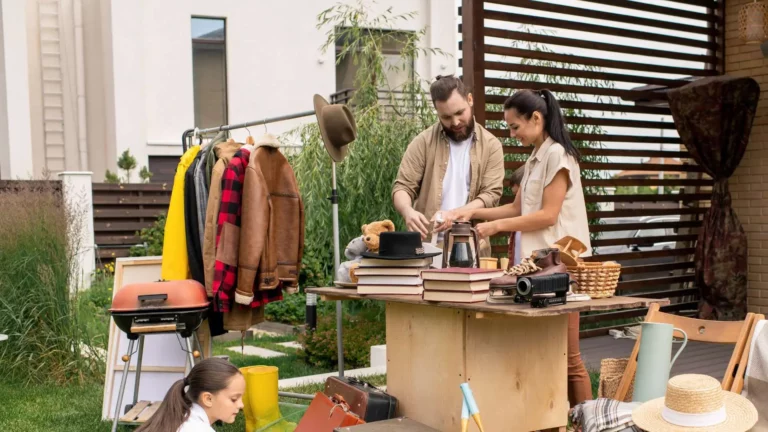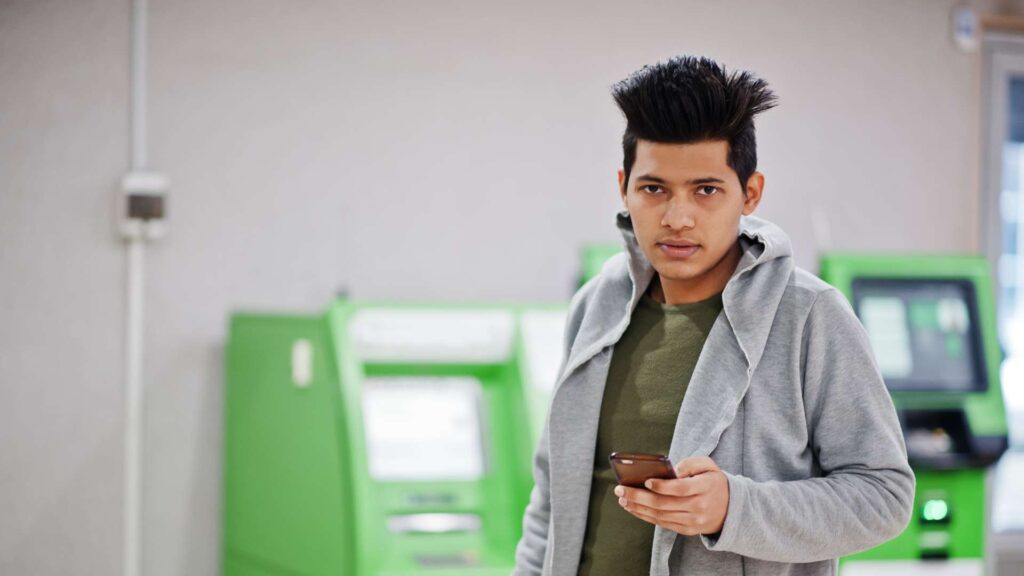Table of Contents
There’s a quiet kind of magic in finding something old and making it new again, especially when it saves you money in the process. That’s the essence of thrift flipping: taking low-cost or secondhand finds, fixing or refreshing them, and turning them into useful (or even profitable) household items.
You don’t need to be an influencer with a power sander or a resale shop on Etsy to make it work. Whether you’re trying to stretch your monthly budget, furnish your home smarter, or build a side stream of cash, thrift flipping offers both savings and satisfaction, the kind that comes from outsmarting retail prices.
Let’s explore the best categories to flip, how to find hidden gems, and the real numbers behind what makes it worth your time.
Why Thrift Flipping Works Financially
Thrift flipping thrives on one key principle: value misalignment. What one person sees as clutter, another sees as potential. Every thrift store, garage sale, or marketplace listing conceals items whose resale or reuse value exceeds the sticker price.
Here’s why it pays off:
- Inflation-proof shopping: When new items get pricier, secondhand values stay stable or even rise.
- Low-risk investment: Even a $10 chair can yield $100 with light refinishing.
- Sustainable economics: You save money and reduce waste simultaneously; a win for your wallet and your conscience.
- Skill-based savings: Each flip builds a skill, from refinishing wood to fixing small electronics, that keeps future repair costs low.
The secret? Start small, stay consistent, and focus on categories with predictable resale or replacement value.
Read related blog: How to Pick Christmas Gifts at the Thrift Store
1. Furniture Flips: The Household ROI King
Few thrift flips deliver savings like furniture. You can furnish an entire apartment for a fraction of the retail cost, or even make a profit by reselling.
What to Look For
- Solid wood over particleboard: Real wood can be sanded, stained, or painted indefinitely.
- Mid-century, vintage, or industrial designs: These styles retain their resale value even after refurbishment.
- Functional structure: Minor scratches are fine. Avoid broken frames or warped joints unless you’re handy with tools.
Typical ROI:
- Average spend: $25–$75
- Typical resale/replacement value: $150–$400
- Time to flip: 2–4 hours
Real-World Example:
A scratched $40 oak desk from Goodwill + a weekend’s worth of sanding and paint = $220 resale or long-term home use for pennies on the dollar.
2. Small Appliances and Electronics: The “Quick Win” Category
Old doesn’t always mean obsolete, especially for durable electronics.
Coffee makers, blenders, record players, or speakers are often discarded for minor issues that cost less than $10 to fix.
What to Flip
- Kitchen gadgets: Air fryers, toasters, espresso machines (test before buying).
- Speakers & stereos: Vintage audio gear is back in style and resells well online.
- Game consoles: Older models, such as the Nintendo DS or PS2, have a strong collector demand.
Savings Tip:
Search thrift stores early in the week after weekend donations. Always test items onsite or confirm return policies.
Typical ROI:
- Investment: $10–$50
- Value: $100–$300 resale, or saved replacement costs if used at home.
- Bonus: Repair tutorials are everywhere. YouTube is a goldmine for quick fixes.
Read related blog: Big Purchase Framework: Value Per Use and Resale Math
3. Clothing and Textiles: Everyday Savings Hidden in Plain Sight
This is the easiest entry point into thrift flipping and the most practical for everyday life.
Best Categories to Target
- High-quality basics: Denim, wool, linen, and cotton. Durable and easy to clean.
- Branded athletic wear from Lululemon, Nike, Patagonia, or Levi’s often resells for 5–10 times the thrift cost.
- Outerwear: Jackets and coats offer the best resale-to-purchase ratio.
- Linens and curtains: Rewash, dye, or resize for creative reuse at home.
ROI Snapshot
| Item Type | Typical Thrift Cost | Retail Equivalent | Potential Savings |
| Denim jeans | $8 | $60–$100 | $52–$92 |
| Winter coat | $20 | $120–$200 | $100–$180 |
| Bedsheets (linen/cotton) | $10 | $70 | $60 |
Insider Tip: Use your local tailor or dry cleaner as part of your flipping ecosystem. Small alterations can turn “almost fits” into wardrobe staples.
4. Home Decor and Art: The Aesthetic Upside
Decor is where creativity and savings collide. A bit of paint, framing, or styling can significantly increase value.
What to Look For:
- Frames and mirrors: Repaint and reuse. Vintage frames often retail for 10 times thrift prices.
- Ceramics and vases: Neutral colors or minimalist designs are easy to resell or style.
- Lighting: Updating old lamps with new shades or bulbs can create high-impact transformations.
ROI Snapshot:
- Average spend: $10–$30
- Resale/retail equivalent: $80–$200
- Bonus: Decorative items often require less effort than functional ones. Most are visual upgrades.
Pro Tip: Follow home decor hashtags or Pinterest boards to stay on trend; style relevance is your silent multiplier.
5. Sports, Fitness, and Outdoor Gear
This is one of the most overlooked categories for thrift flipping, especially for households with kids or those with seasonal hobbies. From bicycles to yoga mats and tents, you can save hundreds of dollars per year by being a smart shopper.
What’s Worth Hunting For
- Bikes: Older frames, especially those made of steel, are durable and easily repairable.
- Weights and dumbbells: Iron lasts forever. Just clean and repaint.
- Camping gear, including coolers, stoves, tents, and backpacks, often appears barely used.
ROI Snapshot:
- Investment: $15–$60
- Resale/retail equivalent: $100–$300
- Savings multiplier: 4x to 8x
A family that thrift-flips outdoor gear seasonally can save upwards of $500 annually on equipment alone.
Read related blog: Decluttering-for-Cash Service: Pricing and Scope
6. Kitchenware and Cookware: Everyday Efficiency
The kitchen is filled with quietly expensive items that can be thrifted and brought back to life.
Vintage cookware, utensils, and serving ware often outperform new, cheaply made alternatives.
Look for:
- Cast-iron pans: A $10 thrift-store skillet can last a lifetime with proper re-seasoning.
- Glass storage containers: Safer and more sustainable than plastic.
- Mixing bowls and bakeware: Classic brands like Pyrex or CorningWare hold both function and resale value.
ROI Tip: Focus on replacement value, not resale value. Kitchen thrift flips are about reducing recurring expenses, not flipping for profit.
7. Kids’ Gear and Toys: The Fastest ROI in the House
Parents know how quickly kids outgrow everything, which makes this category perfect for flipping. From clothes and toys to strollers and bikes, secondhand markets thrive on rotation.
Smart Flipping Strategy:
- Buy bundles (lots) from marketplace listings. Resell individual items.
- Clean, disinfect, and photograph well for quick turnover.
- Always check safety recalls for baby gear.
Typical ROI:
- Cost: $10–$50
- Value: $100+ or hundreds saved annually in reuse.
Kids’ thrift flips are circular. Buy secondhand, use it, then resell it again.
The Hidden ROI of Thrift Flipping
The true value of thrift flipping isn’t just cash saved or earned. It’s habit reprogramming.
When you flip, you:
- See items for potential, not replacement.
- Build repair confidence, reducing dependence on “buy new.”
- Foster resourcefulness that extends to other areas of life, budgeting, home maintenance, and even investing.
You start to see “waste” differently; not as clutter, but as capital.
How to Track Your Flipping Wins (and Savings)
Saving is only satisfying when you can see it.
Use Beem’s BFF Budget Planner to:
- Tag and track your “Thrift Flips” as a spending category.
- Compare resale profits or savings to total household expenses.
- Even fund small purchases with Everdraft™ Instant Cash, interest-free, to secure deals before they disappear.
Beem turns each thrift flip into measurable financial progress, not just a lucky find.
The Thrift Side of Stuff
The “5-Minute Scan” Rule: How to Spot Hidden Value Instantly
Thrift stores and flea markets can feel like treasure hunts. They are fun but chaotic. Without a method, it’s easy to walk away empty-handed or with junk you’ll regret later. That’s where the 5-Minute Scan Rule comes in.
Start by scanning materials, not colors. Solid wood, leather, wool, cast iron, and glassware often outlast all other materials. Then, test construction, like weight and sturdiness, usually signals longevity. Flip items over to inspect seams, screws, or labels. Small chips or scratches are fine; structural damage isn’t.
Train your eye for craftsmanship, not trendiness. A $5 teak stool can outlive a $50 particleboard one. The more you practice scanning, the faster you’ll recognize pieces that can be revived and resold or used beautifully at home.
Thrift Store Economics: Why Quality Outlasts Cheap New Buys
One of the biggest misconceptions about thrift flipping is that it’s only about saving money upfront. But the deeper value comes from longevity economics, the cost per year of use.
A $15 pre-owned wool coat that lasts five winters is a better investment than a $60 fast-fashion version that pills in one. A $20 thrifted cast-iron skillet will serve generations, while a non-stick pan burns out in a year. The principle is simple: older, high-quality items often outperform newer, less expensive ones.
When you start calculating purchases by cost per use rather than sticker price, thrift flipping turns into a quiet form of wealth-building. You’re not just saving; you’re buying time and durability.
The Restoration Mindset: Fix, Don’t Fear
Most people overlook great thrift finds because they can’t see past a scratch or faded finish. But in the world of flipping, imperfections are just opportunities waiting for attention.
A scratched table can be sanded and oiled in 30 minutes. A torn fabric chair can be reupholstered with a yard of material and a staple gun. Even oxidized brass or dull silverware can regain its shine with a combination of baking soda and lemon.
Restoration doesn’t mean becoming a DIY expert; it means seeing potential. The goal isn’t perfection; it’s transformation. Every repaired or reimagined item adds to your household savings and your skill set, one small fix at a time.
Building Your “Flip Kit”: Tools That Make Every Project Easier
Just like a chef needs good knives, a thrift flipper needs the right basic tools. Start with a Flip Kit, a small box or drawer with essentials that make quick restorations painless.
Include sandpaper (medium and fine grit), a multi-surface cleaner, wood polish, a screwdriver set, glue, a small paintbrush, and touch-up paint. Add a fabric patch kit or staple gun if you like reupholstering. Over time, this modest collection pays for itself by saving you the cost of outsourcing small fixes.
Even five minutes of cleaning or tightening screws can double the value of a thrifted item, proving that a well-equipped home workshop is one of the best investments you can make in your household.
From Hobby to Side Hustle: Turning Thrift Flipping Into Income
Thrift flipping doesn’t have to stop at personal savings. Once you understand what sells, it can easily evolve into a small, steady side income.
Start by focusing on a single niche, such as mid-century furniture, vintage cookware, or denim jackets. List a few pieces on local marketplaces like Facebook, Craigslist, or OfferUp. Photograph items in natural light, mention the materials or brand names, and include a scale for accurate representation.
With consistency, your savings mindset becomes an entrepreneurial one. Every successful flip teaches you something about pricing, photography, and demand. Before long, you’ll notice that your thrift runs are not just cost-saving routines; they’re income-generating opportunities that align with sustainability and creativity.
Read related blog: Best Side Hustles for Retirees to Earn Extra Income
The Environmental Bonus: Savings Beyond the Wallet
Every thrift flip helps keep waste out of landfills and reduces the carbon impact of manufacturing new goods.
- Flipping one chair saves ~25 lbs of waste.
- Refurbishing electronics prevents hazardous e-waste.
- Reusing textiles saves thousands of liters of water.
Saving money and saving the planet don’t have to be separate goals. They often start in the same aisle at the thrift store.
FAQs on Thrift Flipping for Household Savings: Best Categories
Do I need special skills to start thrift flipping?
Not at all. Start with simple tasks, such as painting furniture, cleaning vintage finds, or making minor repairs. As you gain confidence, you can expand into more complex flips. Tutorials online make learning almost effortless.
How much time does thrift flipping take weekly?
It depends on your goals. Even dedicating two hours a week can generate $100–$200 in value, especially if you focus on high-ROI categories, such as furniture or small appliances.
Is thrift flipping profitable or just for personal savings?
Both. Many people start flipping to save on household goods and eventually transition into part-time reselling. Profitability grows as your eye for quality improves.
How can I avoid accumulating or creating clutter when flipping?
Set a rule: for every item you bring home, one must be given away. Keep your focus on function or resale, not accumulation.
How can Beem help me manage my thrift flips financially?
Beem’s Busget Planner allows you to categorize spending, track resale income, and visualize your ROI over time. You can even set alerts for saving goals tied directly to your flipping profits, turning each project into measurable progress.
From Bargains to Balance: The Thrift Flip Mindset
Thrift flipping isn’t about chasing trends or running a resale empire. It’s about turning resourcefulness into reward, taking what’s already around you and extracting value others overlook.
Every repaired lamp, revived chair, or rehomed jacket adds up, not just in dollars saved but in the quiet satisfaction that comes with financial control.
And with the Beem app helping you track, budget, and redirect your gains, every flip becomes a step toward smarter, more sustainable living. Because saving money shouldn’t feel restrictive, it should feel creative and wholesome. Download the app now!















































